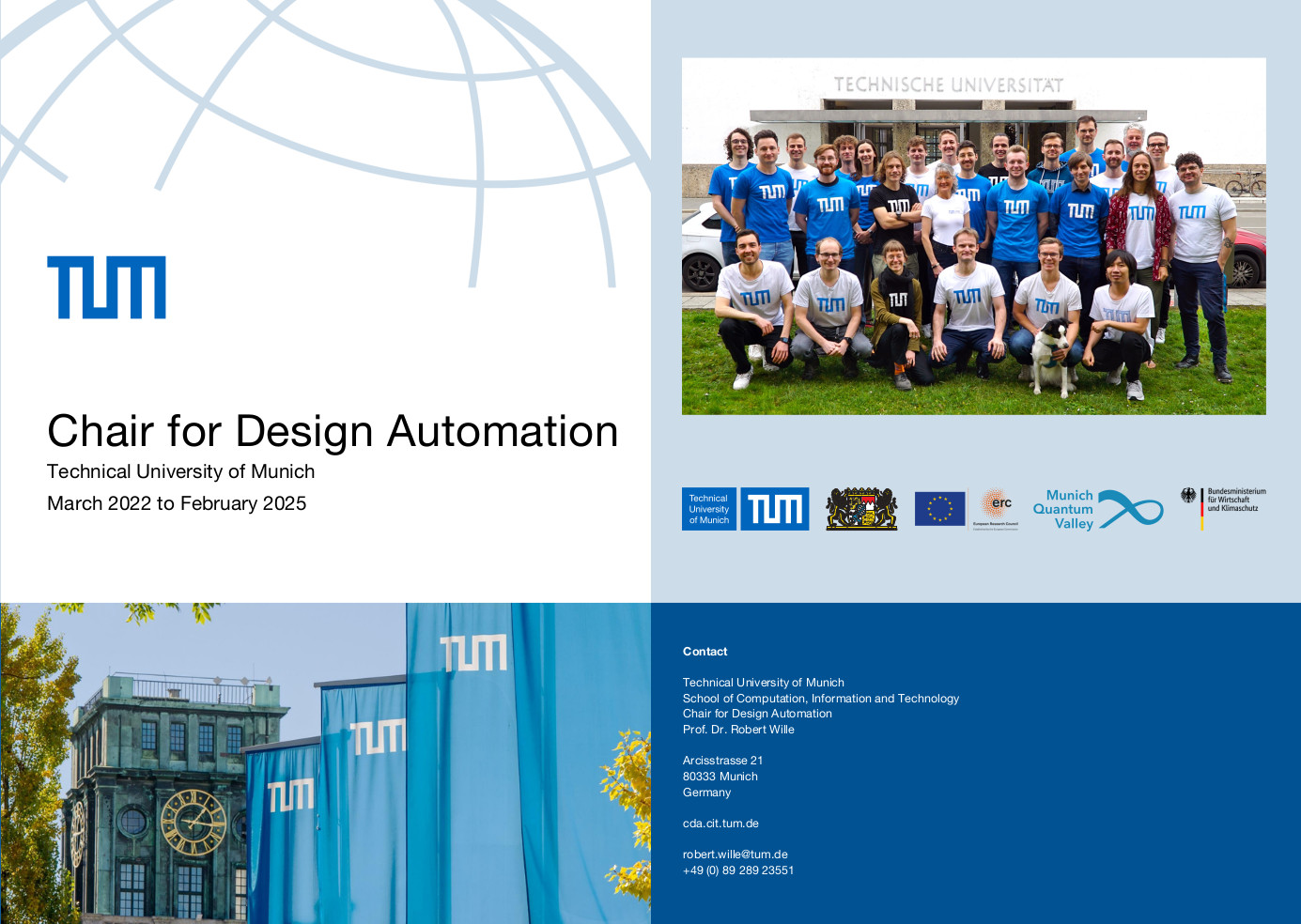
Research
The Chair for Design Automation covers the development of design methods for various application areas. Our work focuses on the design and simulation of circuits and systems for conventional and future technologies (such as quantum computing, microfluidics, or nanotechnologies). Besides that, we have proven to successfully apply the methods developed by us in complementary research areas. We believe in research-oriented learning and are trying to make our developments available as opensource whenever possible. On the following pages, a summary of our research interests and contributions is provided. Besides that, you can find our publications on this page.



